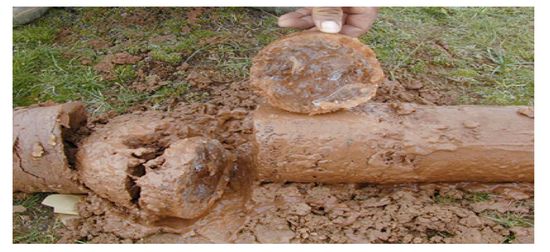Qinghai-Tibet Expressway experimental research
Updatetime:2010-11-19From:
【Enlarge】【Reduce】
Dr. QiHao Yu, Professor of Cold and Arid Regions Environmental and Engineering Research Institute, Chinese Academy of Sciences,has made certain progress in the Qinghai-Tibet Expressway experimental research.The following is the essentials of research progress of Dr. QiHao Yu and his research group.
As one part of the National Highway Network Planning in China, the Qinghai-Tibet Expressway (QTE) from Golmud to Lhasa will be built in the interior of the Qinghai-Tibet Plateau (QTP) across about 630 km of permafrost lands. Due to the problematic interactions between the engineering foundations and permafrost, the frozen-soil roadbed of the QTE will be subjected to the more intense thermal disturbances due to the wider black surface. The design and construction for long-term thermal and mechanical stability will face more severe challenges than those in ordinary highways and railways in the same region. In order to provide scientific support for cold regions engineering practices, the QTE Experimental Demonstration Project (EDP) was constructed in situ in the vicinity of the Beilu’he Permafrost Station in the interior of the QTP. In this paper, the anticipated problems of the proposed QTE project are enumerated, and the structures of the test sections for QTE EDP are described. Through numerical simulations, it was found that the heat transfer processes occurring in each specific road structure are significantly different. The heat accumulation in the highway embankment is mainly due to the black bituminous pavement, but in the railway embankment with its gravel surfaces, it mainly comes from the side slopes. As a result, the net heat accumulation of the highway embankment is three times higher than that in the railway. In expressway, the heat accumulation is further increased because of the wider pavement so that significantly more heat will be accumulated in the roadbed beneath the centerline area. Thus, the thermal stability of the frozen-soil roadbed and the underlying permafrost of the QTE can be seriously threatened without proper engineering measures protection against thawing. Based on research and practical experiences from the operating Qinghai-Tibet Railway (QTR) and the Qinghai-Tibet Highway (QTH), combined with the predicted characteristics of heat transfer in an expressway embankment, nine kinds of engineering measures for mitigating the thaw settlement of foundation soils through the cooling the roadbed soils were built and are being tested in the EDP. The design of the monitoring system for the EDP and the observed parameters were also described.



Appendix




